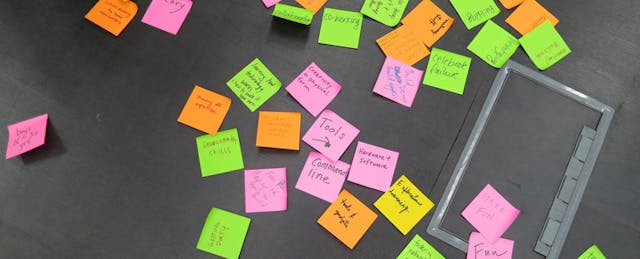The Common Core State Standards sets high bars for student success by outlining the set of skills that students are expected to master in each grade. And when all’s said and done, they are supposed to be equipped with critical-thinking, problem-solving, and other career-oriented skills for college and 21st century jobs.
Common Core is explicit in outlining goals but ambiguous on how teachers get their students there. Words like “analyze” and “identify” are frequently mentioned, but can mean different things to different people. It’s like the game of telephone: the original intent can get lost when standards get passed from the standards writers to textbook publishers, teachers, and finally students.
Fortunately, this open-endedness plays to the strength of teachers in special education--“sped-ucators”--whose day-to-day involve finding creative solutions to adapt broad goals to the varying skills and needs of their students.
Common Core encourages sped-ucators to be creative and differentiate or individualize lessons through Universal Design for Learning (UDL) strategies. These best practices are organized into three domains: how a teacher represents the content, how students express their knowledge, and strategies to foster student engagement.
As a special education teacher for 7th graders with a wide array of disabilities (learning disabilities, brain injuries, downs syndrome, cerebral palsy, and hard of hearing, just to name a few), I undoubtedly know that some students will struggle with reading and writing the assignment at grade level. So rather than having every student read the same book and write a report evaluated on one set of criteria, I will accept multiple versions of the same assignment. For example, one student can read a book with visual supports, such as a graphic novel. Another can do an oral presentation rather than writing a formal book report. And based on my assessment of each of their needs and interests, I encourage them to make use of technology to make these activities more engaging. I encourage some to make PowerPoint slides, and others to use text-to-speech software to have their books read aloud.
Having my students engage with tech tools on a daily basis addresses another goal highlighted in the Common Core Standards: the ability to “use technology and digital media strategically and capably.”
Many students with special education services are already using in 21st century technology with the guidance of their special education teachers. According to a body of research, at risk-students and those performing below grade level spend more time on-task in the classroom when technology is thoughtfully integrated. It is not merely the novelty of technology that excites students, but rather the technology gives them access to the curriculum.
Here are a few examples of students using technology in my classroom:
- Jane is a girl with an intellectual disability. She has never been able to talk because of her disability, but now she is learning how to use an app on an iPad called LAMP. This app has many icons organized by part of speech and word meaning. With a speech therapist, we are teaching her to communicate with the world through this new language system.
- As an English Learner, and a student with a disability, Juan does not yet read and write at grade level. When the term paper for his social studies class rolled around, Juan and I searched for historical documentaries online, then turned his research into a stellar Google Docs presentation which incorporated all of the key elements of the Common Core Standards for writing a research paper.
- Pedro is new to the country and has ADHD. He can be difficult to motivate, and he has a hard time sitting still--until I found Raz Kids. Typically he produces little work throughout the day, but Pedro cannot wait to play Raz Kids for at least 30 minutes, three times a week. I analyze the data from Raz Kids to better our instruction in the classroom. Pedro’s reading level has increased from 3rd grade to 4th grade in 3 short months. Now that he is excited and engaged, he is learning to read.
Of course, the different teaching techniques and uses of technology I shared are not limited to special education. Many general education teachers employ these strategies as well.
Amidst all the uncertainty about putting Common Core to practice, we should remember that the idea of standards are not new. Both general and special education teachers have been differentiating and individualizing standards-based content for their students for years. And there’s lots that they can learn from one another to share and explore innovative methods to extract the essential purpose of the new standards and and create individualized lessons that meet the needs of our students.
Do you have any tips to offer? Share them below!


